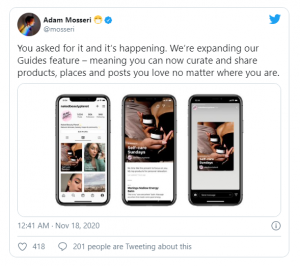 I’m convinced that email marketing can be successfully used by any type of business regardless of size, location, or industry vertical.
I’m convinced that email marketing can be successfully used by any type of business regardless of size, location, or industry vertical.
Some businesses are more open to this conviction. Take for example an online retail business and it would be very easy to see how they could use email to generate repeat visits and build customer lifetime value. Similarly, an online publisher could also very easily use email marketing to drive traffic, bolster advertising revenues, and promote other activities such as the sale of premium content or training and consultancy services.
Of course, these two examples are very “traditional” online business models. However, some businesses (for various reasons) find it very difficult to engage their audience online. How could they possibly use email marketing to successfully grow their businesses?
Lessons from a Small Island (Malta)
I recently visited the small Mediterranean island of Malta and spent the day with a group of highly engaged digital marketers. Malta is a very small yet densely populated island with more than 400,000 people living in just over 122 square miles (the main island is just 17 miles long by 8 miles wide). Journey times across the island rarely take more than 30 minutes and there is a real sense of community on the island (with everyone knowing virtually everyone else).
Due to its small size, very little business on the island is completed online. While people do engage with the web to aid their buying decisions the final conversion is more often completed offline via a traditional face-to-face transaction. This makes life very hard for digital marketers who have very little in the way of conversions to show their clients.
This is a problem for many hyper-local businesses who may find themselves wondering what’s the point of investing time, effort, and money in online marketing like email when most of our trade is done face-to-face?
How Do You Monitor Success?
The answer to this problem is addressing how you monitor success. Perhaps the final conversion will never (or rarely) take place online but the many factors contributing to it can almost certainly be attributed to your online marketing efforts.
5 Tips for Driving and Monitoring Real World Conversions via Email
- Click and Collect: Nobody said ecommerce had to operate purely as a mail order business. Click and Collect (where people buy products online and collect in person), is an ideal way of encouraging people into your retail establishment (where they can potentially be encouraged to spend more money). Sharing your latest offers with your email subscribers is a great way to encourage footfall and generate orders. Try offering incentives to join your email list such as discounts off future purchases or by offering an early mover advantage (offering a first chance to buy can be incredibly powerful incentive particularly when stock is limited – see #2).
- Perception of Scarcity: If stock is limited people will be more inclined to buy online. Highlight how many items you have in stock or perhaps offer a limited discount or added value proposition (free insurance, accessories bundle, etc.) to the first five people who order.
- Pre-Orders: Promote and sell items you don’t yet have in stock. Large online retailers like Amazon do a great job at promoting books and movies some months ahead of release. There is no reason why you cannot do the same. This may also take some of the risk out of ordering stock for items without understanding the levels of demand.
- Long Tail Items: Use your online marketing to promote products or services you do not normally carry in stock. These could be long tail items (that do not make sense to stock normally) or perhaps bulkier or more expensive items that take up space or put pressure on your cash flow.
- Engagement: Email marketing is a little bit like classified advertising. It acts as a regular, general reminder that you are still in business and available should a customer require a product or service you offer. They might not engage with every email you send but when a need arises, they will remember your name and make you the first point of call.
How have you used email marketing to market your local business? Share your comments below:
This abridged post first appeared on the iContact Email Marketing Blog.
(267)
Report Post






